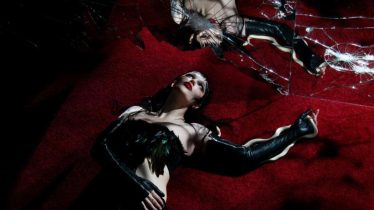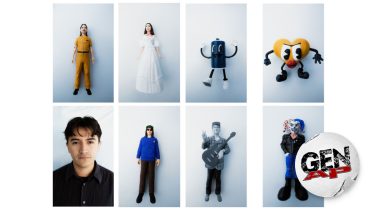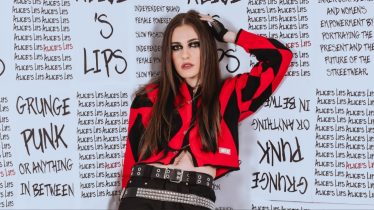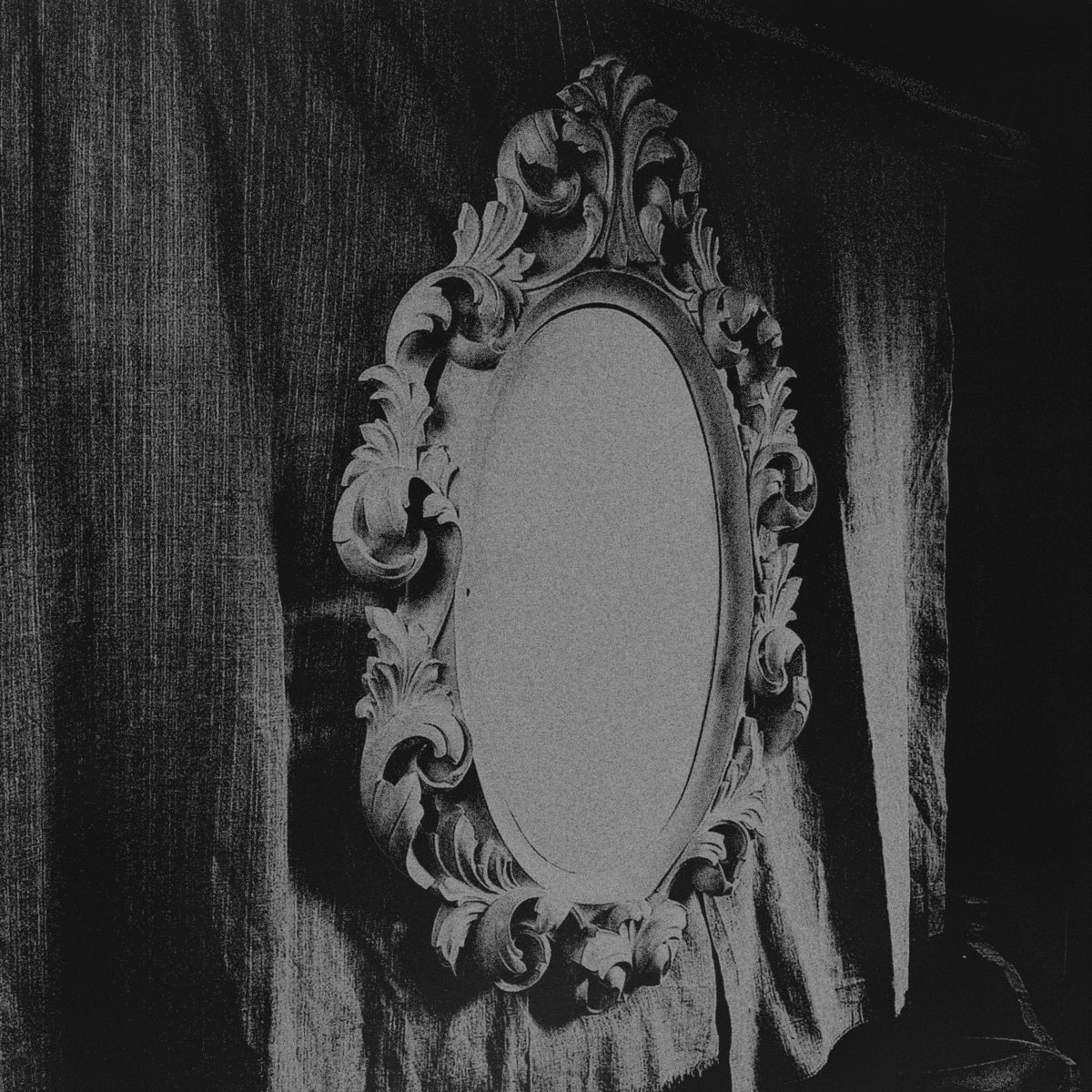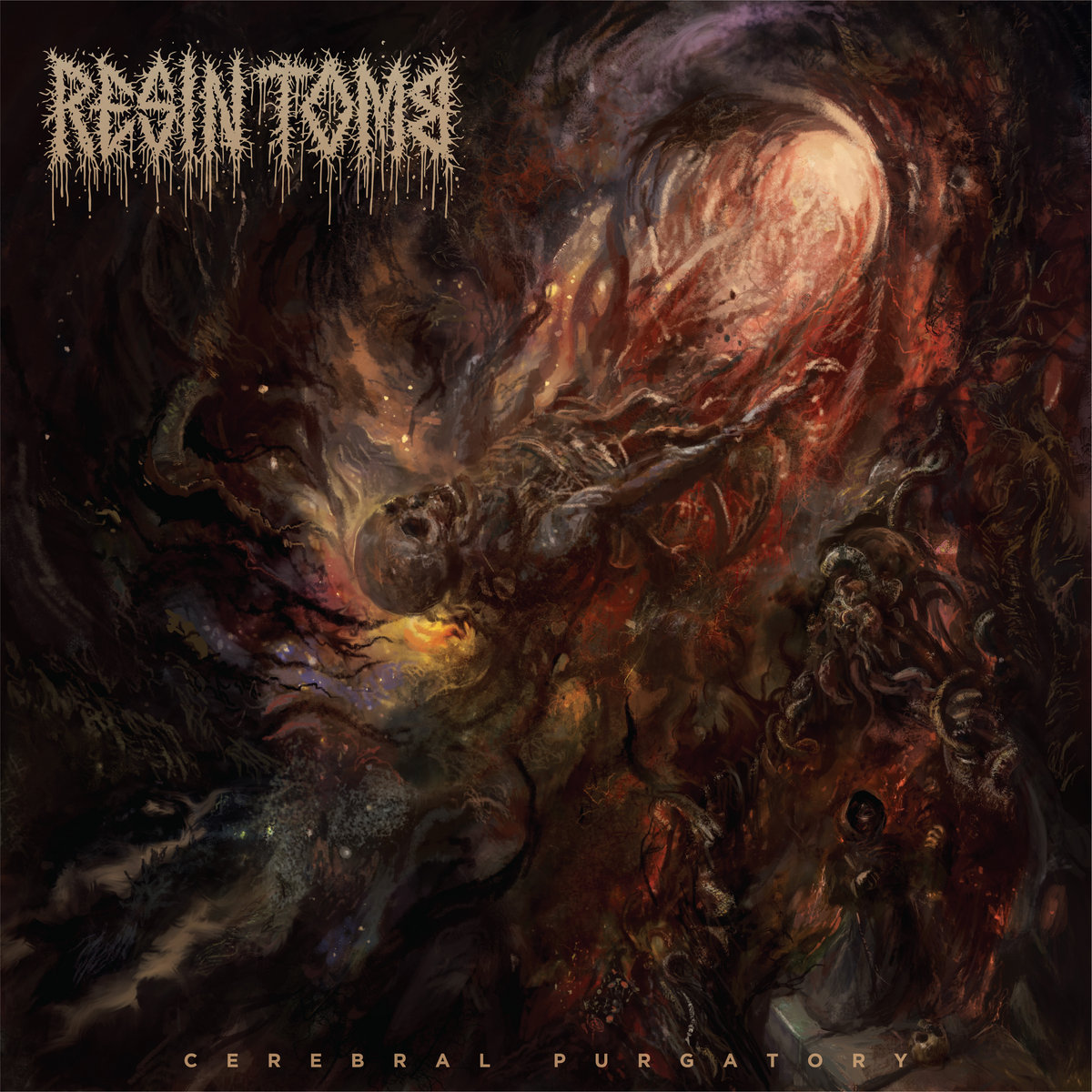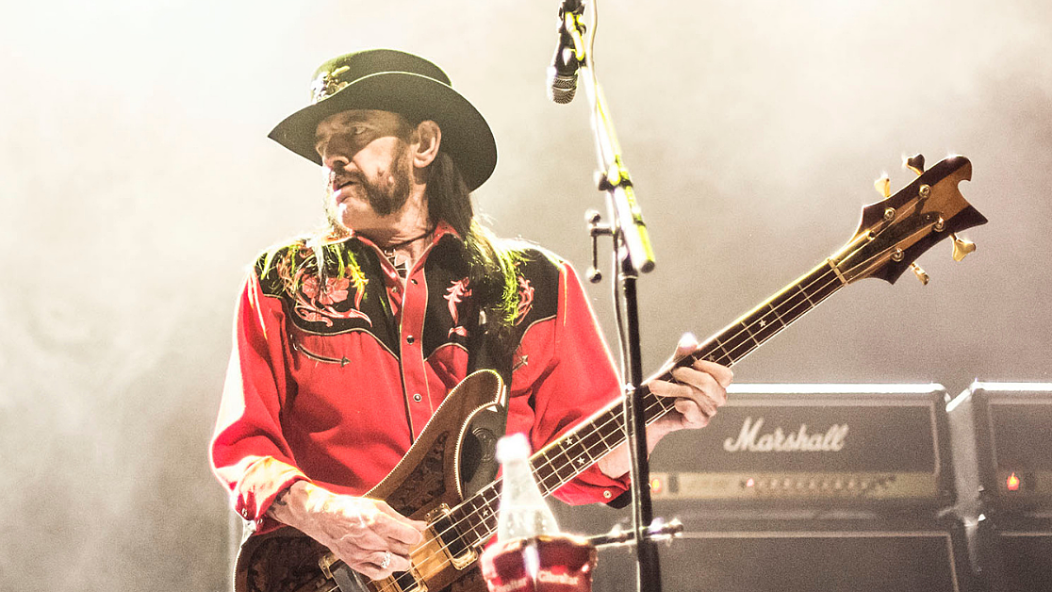
A history of punk and metal fusion, from Motörhead to Metallica
Nov. 20, 1980, after-dinner hour: England’s eyes were focused on Top Of The Pops, BBC’s long-running pop program, as they had every Thursday evening since the first day of 1964. In the middle of the rundown of the U.K.’s 30 best-selling singles appeared this apparition, resembling black leather Visigoths from a Hell’s Angels fever dream. The mixed scent of Marlboros, bourbon and motor oil was tangible through the screen as the tallest one, all lank hair and mirrored shades, emitted a bowel-ripping rumble from his Rickenbacker bass.
Another mirror-shaded demon, seated behind an enormous trap set, detonated a locomotive double-kick drum attack. Yet another, who seemingly stepped out of Hang ‘Em High in his wide-brimmed hat, strapped on a Les Paul tuned to the key of destruction. The one manning the bass, Ian “Lemmy” Kilmister, swaggered for a microphone positioned high enough that he had to crane his neck upward to sing into it. Over three of the deadliest chords rock has known, he let loose a fusillade of gambling metaphors, illustrating his existentialist philosophy: “I don’t share your greed/The only card I need is the Ace of Spades.”
England had two years of TOTP appearances to acclimate to Motörhead’s jacked-up biker rock, which straddled the narrow chasm between punk rock and heavy metal. Quite a feat, considering the two camps were diametrically opposed. Metal was part of the mainstream rock star system punk was built to destroy, with its dedication to excess and lust for money, power and partying. Whereas punk was a raw scream from society’s gutters, stripped-down and economical in its sneer and snarl. But how different were the two, really? Both were meant to be expressions of rebellion, set to the raw blast of overamplified electric guitars.
Read more: 20 greatest punk-rock vocalists of all time
This surely made punk and metal cousins, at the least. Motörhead were the first indication of the two warring factions crossbreeding, creating all manner of mutations. This TOTP appearance, promoting their newly ascendant, chart-bothering single “Ace Of Spades,” was the warning the rock world should heed. Motörhead were no longer contenders. They’d arrived.
Truth be told, a healthy strand of heavy metal was woven all through punk’s DNA. Every early metal acts’ repertoire held at least one protopunk raver. Think about Led Zeppelin’s “Communication Breakdown,” all teeth-grinding angst and hammered-down eighth notes. Cue Black Sabbath’s “Paranoid,” essentially “Communication Breakdown” with a lot more dread. Then there’s Nazareth’s “Razamanaz,” a rager utilizing this same blueprint as an upbeat invitation to a ripple-and-reds party. The idea actually began with the Motörhead of 1968, Blue Cheer.
A more crude disruption of the power trio ideal in vogue since psychedelia’s advent, they stacked up the biggest amplifier skyline this side of the Who, playing at the most punishing volumes of the day. They also favored more unrelenting tempos than the rest of their San Francisco brethren. As indicated by their harsh beatdown of Eddie Cochran’s “Summertime Blues,” their acid trips must have all been bummers.
Once punk arrived in the late ‘70s, there were indications some stadium-rock royalty were checking out the new underground sounds. Led Zeppelin showed up at London’s Roxy in 1977 to enjoy the Damned, as their guitar hero Jimmy Page declared to the NME his love of the Sex Pistols. Who drummer Keith Moon jammed one 1977 night with members of Generation X.
Read more: 12 great standalone punk-rock singles, from the Clash to the Libertines
And as the Pistols recorded their debut album Never Mind The Bollocks Here’s The Sex Pistols at Wessex Sound Studios in the summer of ‘77, Queen were in the room next door tacking a tune called “Sheer Heart Attack.” Its relentless eighth-note drive suggests at least its composer, drummer Roger Taylor, had an ear cocked toward what was happening in the next room. But it’s Motörhead’s rise across the end of the ‘70s that was the crossroads where punk and heavy metal finally shook hands in a devilish pact.
“I should be tired, and all I am is wired” Motörhead at the crossroads
Lemmy was a legendary figure in the London underground. He’d played guitar in third-string beat group the Rockin’ Vickers, roadied for Jimi Hendrix and strangled six-strings for obscure psychedelicists Sam Gopal. Come the ‘70s, he’d dropped down to four strings with sci-fi electro-hippies Hawkwind. Then he had the temerity to score their sole hit single by singing on a piece of cosmic Chuck Berry boogie titled “Silver Machine,” later covered by the Sex Pistols. For his trouble, the band kicked him out on a 1975 American tour following amphetamine possession at the Canadian border.
Upon returning to London, he set about forming a stripped-down power trio based around the MC5, with “elements of Little Richard and Hawkwind,” as he put it in his autobiography White Line Fever: “We were a blues band, really. Although we played it at a thousand miles an hour, it was recognizable as blues – at least it was to us; probably it wasn’t to anybody else.” Initially intending to dub the outfit Bastard, their then-manager advised Lemmy to reconsider because that name would never get them on TOTP. So he went for the American slang term for a speed freak that named the last song he’d written for Hawkwind, a song he’d bring to his new band – Motörhead.
Read more: 11 bands that shaped Detroit punk, from MC5 to the White Stripes
Settling into their classic lineup of Lemmy on his barking bass and razor-blade-gargle vocals, “Philthy Animal” Taylor’s double-time double kick drum assault and “Fast” Eddie Clarke’s squealing post-Detroit guitar attack, they confused plenty into thinking they were a punk band.
Instead, they practiced classic libertinism, which slotted perfectly into punk’s rebellious streak, while practically inventing hardcore’s land speed record-beating tempos. And it was Lemmy whom the Damned called upon when they initially reformed as the Doomed; he deputized on bass as Captain Sensible moved to guitar, before Algy Ward assumed four-string duties. Certainly Britain’s first hardcore bands adored Motörhead. Their T-shirts became fashionable among the new Mohican punks first appearing in 1979. Bands such as GBH or Discharge sounded like Motörhead with cheap equipment and no recording budget.
“Pounding the world like a battering ram”: Punk and metal merge
As Motörhead came to America for the first time, opening for Ozzy Osbourne on his Blizzard Of Ozz tour, they baffled a nation of long-haired youth expecting Sabbath-style slow-grinding. They didn’t know what to make of these speed-guzzling Londoners, with music that sounded too much like that punk-rock shit they hated. Whereas back in Britain, Lemmy and crew roused headbanging youth to reconsider the spiky hair ‘n’ leather set. Judas Priest were as turgid as most other early/mid-’70s metal acts. But a switch flipped in 1978. They’d adopted a leather and studs biker image, with a touch of S&M thrown in for good measure. Such tunes as “Exciter,” from 1978’s Stained Class, or the entirety of 1980’s British Steel sounded as if the Priest had sold off their communal record collections and purchased the entire Motörhead and Damned back catalogs.
Simultaneously, a new generation of English metal bands paid heed to both outfits, plus the Pistols and the rest. As new outfits seemingly sprouted from the soil daily – Def Leppard, Saxon, Krokus, Iron Maiden – the U.K. rock press took notice. It gave it all a rather unwieldy name: The New Wave Of British Heavy Metal. Most punters probably didn’t care if this new strain of hard rock had gained in tensile strength or velocity via the punk scene. They just knew this stuff was harder, louder and faster, and they liked it.
Read more: 10 bands that prove why Misfits endure, from Metallica to My Chemical Romance
Concurrent with Britain’s punk and metal scenes adopting Motörhead as their role model, the influence was already crawling into U.S. musical genetic codes. As hardcore subsumed the old Ramones-based sound as punk’s dominant mode, it appealed to young musicians who’d cut their teeth on stadium rock. You only needed three chords and basic gear to play punk. As hardcore’s initial shock troops learned how to play their instruments, it was only natural for them to try their hands at their initial musical love. You saw it as OC bands usually traveling at slam-dance speed slowed down for at least one breath-catching stomper, such as Eddie And The Subtitles’ infectious “American Society.”
Certainly, more than a little Sabbath was at the heart of hardcore’s most foundational bands, such as Bad Brains and Fear. It was abundantly audible all over Black Flag’s crucial debut album Damaged, rendered even harsher and more atonal in their manhandling. Stains’ sole self-titled album for Black Flag’s SST Records label saw guitarist Robert Becerra spraying whammy-bar excess across such high-speed ragers as “Gang Related Death” and “Quit The Human Race.”
Read more: A history of horror punk, from the Damned and Misfits to Alkaline Trio
In the Baltimore/D.C. area, a prescient singer/guitarist named Scott “Wino” Weinrich was pioneering his own punk/metal merger in his group the Obsessed. As velocitous as molasses pouring in February, he furthered this ethic as he moved to California and signed on as singer with SST’s St. Vitus. Eventually, the universe recognized what Wino had wrought was the earliest doom metal. In 1983, Venice, CA’s Suicidal Tendencies’ self-titled debut album stomped into the general consciousness on the back of menacing crunchers such as “I Saw Your Mommy.” The single “Institutionalized,” with verses built atop a chord progression that was pure early ‘70s ZZ Top before shifting into thrash rock choruses, was one of the first hardcore videos to recieve significant MTV airplay.
And on the Sunset Strip, Mötley Crüe built a sleazy legend for themselves with Too Fast For Love, an independently released album that came on like a Satan-worshiping version of the New York Dolls. More than a little Motörhead and early punk came into play, mostly through leader Nikki Sixx’s natural tastes and inclinations.
Read more: 11 bands and genres that prove Black Flag are a continued influence
But a new Stateside metal underground scene was gestating, nourished by Motörhead, NWOBHM and the punk scene. They borrowed some of the tactics of the punk underground: recording their own cassette demos, spreading the word via their own fanzines and tape-trading networks, forming their own indie labels. All were even faster and heavier than even the fastest/heaviest hardcore or NWOBHM act, and even beyond scene godfathers Motörhead. (Lemmy never acknowledged any possible ties to metal, barely admitting the band’s affinity with punk. For their entire life, he never classified Motörhead as anything other than rock ‘n’ roll.) These younger U.S. bands – Metallica, Slayer and Anthrax, among many others – were proud to be metal, but knew they were quicker on their feet than the heavy bands of the ‘70s. They embraced more accurate terms for their rampaging musical ethic – speed metal or thrash metal.
“We’re gonna rip right through your brain”: Punk/metal’s here to stay
It was a given that Metallica and other speed-metal acts would become the new rock aristocracy. This is the nature of metal, in whatever form it takes. The difference was they became successful on their own terms, remaining true to their original vision, even if Metallica learned some tempos beyond blitzkrieg and began demonstrating those musical subtleties most metal fans dread. Pretty soon, Suicidal Tendencies and other metal-leaning hardcore bands – such as D.R.I., Corrosion Of Conformity and Cro-Mags – amped up those metallic tendencies. This resulted in a speed-metal subgenre, most often called crossover. Then came a number of English bands – Napalm Death, Extreme Noise Terror, Carcass – pushing the tempos ridiculously, calling their 5-to-15 second outbursts grindcore.
Mötley Crüe tipped over to more conventional metal by reducing the punk and glam aspects and amping up the Satanism. Guns N’ Roses followed behind, fishing the Crüe’s abandoned glam-punk side from the gutter where they’d abandoned it, and donned it like a well broken-in leather jacket. They balanced punk refugees like guitarist Izzy Stradlin and bassist Duff McKagan with born metalheads like Slash, who ripped on lead guitar like Joe Perry’s abandoned love child. They became the world’s biggest rock band, never once abandoning their gutter-rock origins.
Read more: Every Green Day album ranked
Punk and metal are permanently intertwined to this day. Bands such as Green Day readily acknowledge their debt to metal, name-dropping influential acts such as AC/DC in interviews and recording their own heavy riffers (“When I Come Around”). You hear metal ripping through acts such as AFI or Sum 41. But perhaps there is no more telling sign of the punk/metal connection than both Slayer and Guns N’ Roses recording punk covers albums in the ‘90s, or both Mötley Crüe and Megadeth covering the Pistols’ “Anarchy In The U.K.,” the latter version featuring genuine Sex Pistol Steve Jones. Ultimately, the fathers of punky metal laid down the law: Motörhead recorded “God Save The Queen” in 2000, Lemmy shrugging, “The Pistols were a great rock ‘n’ roll band.” Enough said.
